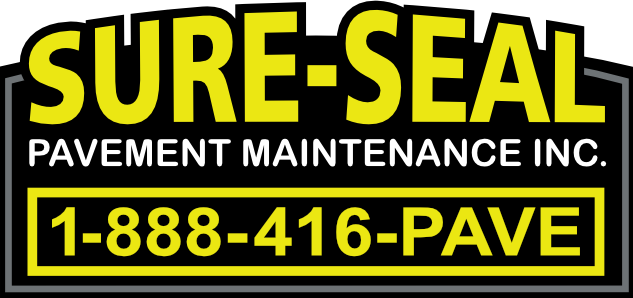For many property owners, paving your parking lot is a big decision. It not only enhances the curb appeal of your property, but it also adds value and functionality to your space. However, with so many paving options available, choosing the right material can be overwhelming. Two popular choices that often come up in discussions about pavement are tarmac and asphalt. While they may seem interchangeable, there are significant differences between these two materials that can affect their performance and durability over time.
In this detailed guide, we will explore everything you need to know about tarmac vs. asphalt paving to help you make an informed decision.
What Is Asphalt?

Asphalt is a composite material predominantly used in pavement, roof shingles, and construction materials. It is composed of hydrogen, carbon, nitrogen, sulfur, and oxygen, as well as aggregates such as sand, stone, and crushed rock. The binding substance of bitumen secures the materials together.
As the most commonly used substance for roads, driveways, parking lots, and curbs, asphalt provides a stable base for heavy-weighted and excessive traffic. Its durability can withstand the harsh weather conditions and temperatures experienced in Ontario year-round.
What Is Tarmac?

Tarmac, or tarmacadam, is a paving
material comprised of tar and crushed stone. It is a common road surfacing material in Europe and parts of North America. The tar-covered stone aggregates are offered as a cost-effective option for residential and commercial customers looking for a low-cost alternative to asphalt.
Common tarmac applications include but are not limited to, driveways, roads, highways, airport runways, parking lots, and sports surfaces. It should be noted that tarmac has become a “relic” in terms of usage. While tarmac has its merits, its usage is less widespread compared to asphalt due to the extreme weather conditions in Canada. Instead, asphalt and concrete have replaced tarmac on many of the highways, airport runways, and playgrounds in the country.
Key Differences Between Tarmac and Asphalt
- Material Composition: The fundamental difference between tarmac and asphalt lies in their composition. Tarmac uses tar as a binder, while asphalt uses bitumen. The choice of binder affects their performance, especially in terms of flexibility, durability, and resistance to harsh conditions.
- Durability & Strength: When it comes to longevity, asphalt tends to be more durable, especially in high-traffic areas or under extreme weather conditions. Tarmac, though flexible, may not hold up as well under heavy loads and extreme temperatures, making it less suitable for specific applications.
- Cost Comparison: Initial installation costs and long-term expenses also vary, however, tarmac generally has a lower initial installation cost, making it an attractive option for budget-conscious projects. That said, asphalt, while more expensive upfront, offers better long-term value due to its durability and reduced maintenance needs.
Pros and Cons of Tarmac
Advantages
- Flexible
- Low installation cost
- Quick installation time
Disadvantages
- Susceptible to UV light radiation
- Vulnerable to harsh chemicals, gas, and fluid spills
- Retains heat
- Extended curing time
- Frequent maintenance and repairs
- Prone to weed, moss, and algae growth
Pros and Cons of Asphalt
Advantages
- Durable
- Long-lasting (up to 30 years)
- Cost-effective
- Minimal noise pollution
- Energy-efficient for vehicles by improving fuel economy and reducing carbon dioxide emissions
- Enhanced safety with skid-resistant surface
- Reduced wear and tear on vehicles and tires
Disadvantages
- Vulnerable to weather damage
- Foundation requires stability
- More expensive
Comparing Tarmac vs. Asphalt
| Factors |
Tarmac |
Asphalt |
| Composition |
Tar and crushed stone |
Bitumen and aggregate |
| Durability |
Less durable for heavy traffic |
Extremely durable, especially for roads |
| Cost |
Cheaper than asphalt |
Higher initial costs |
| Installation Time |
Quick |
Requires more specialized equipment |
| Maintenance Frequency |
Frequent maintenance |
Less frequent than tarmac |
| Environmental Impact |
High carbon footprint, less recyclable |
Low carbon footprint, recyclable |
| Best Use |
Driveways, minimal traffic areas |
Highways, parking lots, heavy-traffic areas |
Choosing the Right Paving Material
Application
While tarmac and asphalt are both suitable for parking lots and roadways, asphalt is usually the better choice due to its durability, smooth surface, and ability to withstand heavy loads and foot traffic. The smoothness of the surface boosts curb appeal while offering the appropriate traction for drivers and pedestrians.
Tarmac may be used for low-traffic roads or specific applications but is generally less effective for high-traffic areas.
Environmental Impact
Using tarmac has several environmental implications. Not only does producing tar involve extracting resources that can have a significant environmental impact but tarmac also absorbs chemicals and harmful fluids from vehicles, leading to runoff into local waterways. In addition, tarmac is less recyclable compared to asphalt, contributing more waste to landfills.
Asphalt is considered one of the most sustainable products in the paving and construction industries. It can be recycled into usable products such as pavement, roof shingles, and sports groundcover, reducing waste and conserving resources. Although the production of bitumen still has a notable carbon footprint, advancements in technology are making the process eco-friendly.
Maintenance and Repair
Tarmac roads and parking lots require frequent
maintenance and repair to address wear and tear. This is because tarmac is more vulnerable to environmental factors and heavy traffic loads. Dirt and debris need to be repeatedly removed before the surface is cleaned with specialized solutions, especially in regions with extreme weather conditions.
Since asphalt is more durable, it is considered low maintenance compared to tarmac.
Sealcoating the surface of the asphalt can extend its lifespan and provide a layer of protection against water and UV damage. Crack sealing and patching can also fix any damages that occur over time. With proper maintenance, repairs are less frequent, extending the lifespan of the pavement.
Contact Sure-Seal Pavement for the Best Paving Solutions
Choosing between tarmac and asphalt requires careful evaluation of your specific project needs. Both materials have their unique advantages and disadvantages, but asphalt often proves to be the superior choice for most property management applications.
Sure-Seal Pavement Maintenance Inc. specializes in asphalt installation, maintenance, and repair services that can boost the safety, security, and value of your
commercial property. We offer a seven-year warranty for our slurry sealing, pavement repair, and
resurfacing services.
Contact us at
(416) 410-3705 or complete our online
form to schedule a free onsite consultation. Our team of professionals is here to help you choose the best paving solution for your property.
 Asphalt is a composite material predominantly used in pavement, roof shingles, and construction materials. It is composed of hydrogen, carbon, nitrogen, sulfur, and oxygen, as well as aggregates such as sand, stone, and crushed rock. The binding substance of bitumen secures the materials together.
As the most commonly used substance for roads, driveways, parking lots, and curbs, asphalt provides a stable base for heavy-weighted and excessive traffic. Its durability can withstand the harsh weather conditions and temperatures experienced in Ontario year-round.
What Is Tarmac?
Asphalt is a composite material predominantly used in pavement, roof shingles, and construction materials. It is composed of hydrogen, carbon, nitrogen, sulfur, and oxygen, as well as aggregates such as sand, stone, and crushed rock. The binding substance of bitumen secures the materials together.
As the most commonly used substance for roads, driveways, parking lots, and curbs, asphalt provides a stable base for heavy-weighted and excessive traffic. Its durability can withstand the harsh weather conditions and temperatures experienced in Ontario year-round.
What Is Tarmac?
 Tarmac, or tarmacadam, is a paving material comprised of tar and crushed stone. It is a common road surfacing material in Europe and parts of North America. The tar-covered stone aggregates are offered as a cost-effective option for residential and commercial customers looking for a low-cost alternative to asphalt.
Common tarmac applications include but are not limited to, driveways, roads, highways, airport runways, parking lots, and sports surfaces. It should be noted that tarmac has become a “relic” in terms of usage. While tarmac has its merits, its usage is less widespread compared to asphalt due to the extreme weather conditions in Canada. Instead, asphalt and concrete have replaced tarmac on many of the highways, airport runways, and playgrounds in the country.
Tarmac, or tarmacadam, is a paving material comprised of tar and crushed stone. It is a common road surfacing material in Europe and parts of North America. The tar-covered stone aggregates are offered as a cost-effective option for residential and commercial customers looking for a low-cost alternative to asphalt.
Common tarmac applications include but are not limited to, driveways, roads, highways, airport runways, parking lots, and sports surfaces. It should be noted that tarmac has become a “relic” in terms of usage. While tarmac has its merits, its usage is less widespread compared to asphalt due to the extreme weather conditions in Canada. Instead, asphalt and concrete have replaced tarmac on many of the highways, airport runways, and playgrounds in the country.

